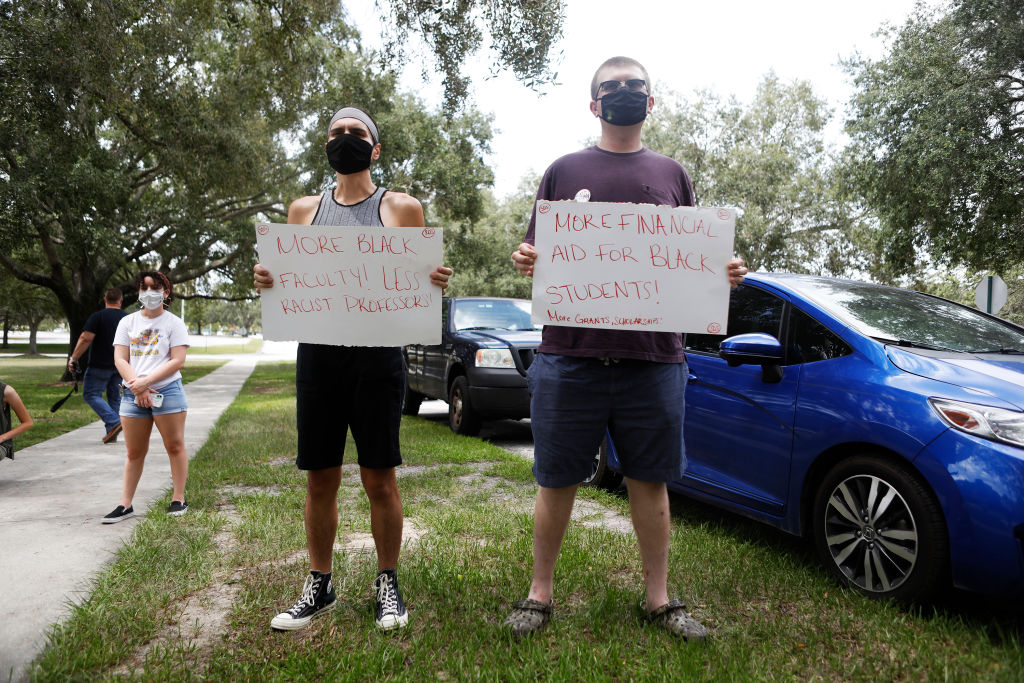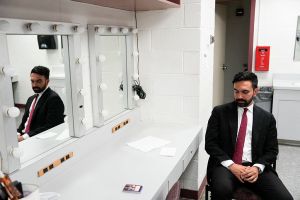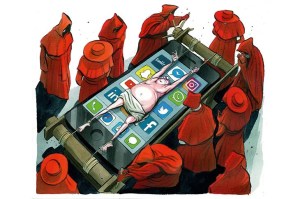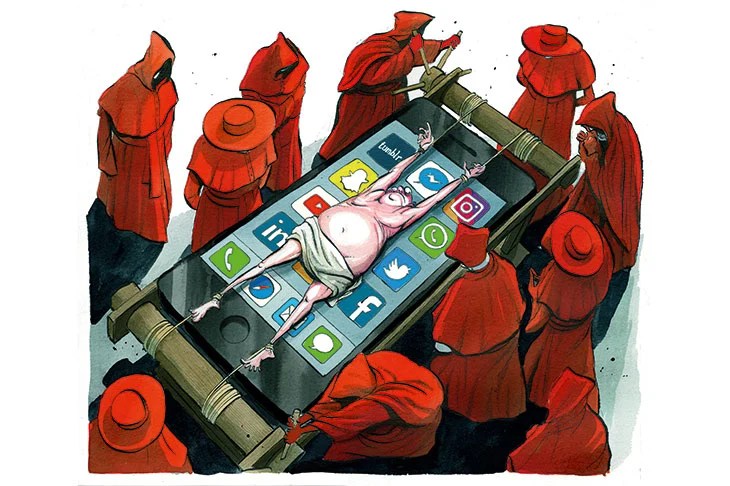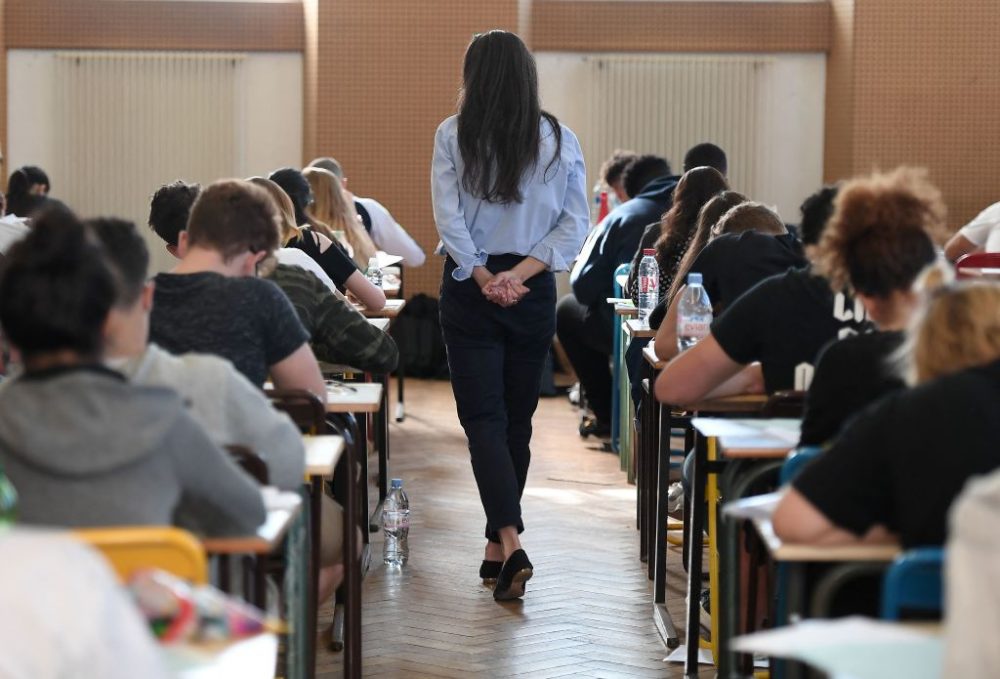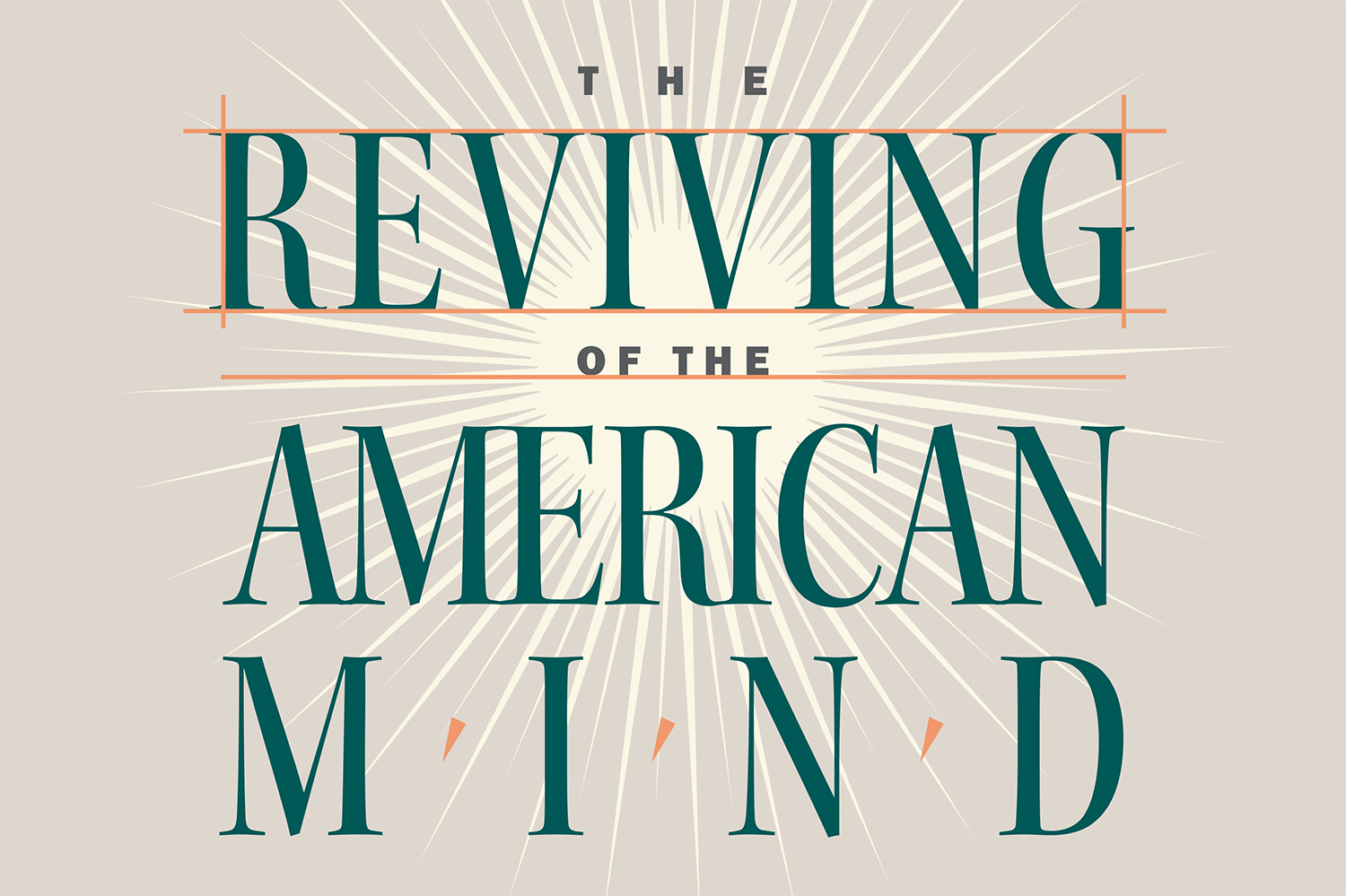The never-ending social justice messaging from our college and university presidents and their legions of diversity, equity and inclusion officers tells us that students of color and the non-heteronormative are silenced by teachers and peers, both in and outside the classroom. This is absolutely false and does not stand up to empirical scrutiny.
Colleges and universities should be open to all persons and ideas and promote vigorous debate. But new, robust data reveals that many students are silencing themselves. Those who self-censor in the greatest numbers are not sexual or racial minorities, whatever administrators, student activists and the media claim. In reality, it is conservative, white and religious students who are being silenced at the highest rates amid mobs and campus movements.
The Foundation for Individual Rights in Education (FIRE) has just released the largest and more comprehensive study of student attitudes toward speech to date. The data is sobering. The study covers almost 20,000 currently enrolled students at 55 colleges around the nation. The sample sizes are huge, enabling real and meaningful comparisons between various groups.
The FIRE survey asks a number of penetrating questions about speech and how students express themselves. In aggregate, the data confirm earlier studies: viewpoint diversity is under attack and students regularly censor themselves out of fear of expressing their real views.
Sixty percent of students reported that they could not express an opinion because of how their fellow students, a professor or their administration would respond. But that headline alone does not tell the complete story.
Seventy percent of conservative students have self-censored compared to 61 percent of moderates and just 55 percent of liberals: a 15-point difference. And students who are part of religious denomination (63 percent) are more likely to limit their expression compared to atheists, agnostics and those who say that have no religion (56 percent).
Even more significant differences emerge when the survey probes willingness to speak about controversial topics and ideas in a particular setting. Sixty-one percent of conservative students are comfortable discussing a controversial political topic with their classmates, but 71 percent of liberal students are comfortable. We see the same scale of difference when it comes to writing an article or letter in the student newspaper that criticizes the college administration: 61 percent of liberals would feel comfortable penning such a statement, compared to just 49 percent of conservatives.
When asked about publicly disagreeing with a professor about a controversial topic, black students (53 percent) were more comfortable doing this compared to white students (45 percent). Parity between black and white students emerged in terms of writing op-eds (56 percent and 59 percent) and talking with classmates about contentious issues (68 percent and 68 percent), but 45 percent of black students were comfortable sharing unpopular opinions on a social media account tied to their name, compared to 38 percent of white students.
Simply put, the data make it clear that students of color are not silenced on campus: majorities are willing to speak up in class and to their peers. In fact, black students are more confident and vocal than white students.
Students who have a faith of some sort are less likely to be open to talking with their professors and peers or writing op-eds. And heterosexual students are much more likely to hide their feelings and expressions as well. Fifty-four percent of straight students would be willing to write op-eds, compared to 64 percent of gay and lesbian students. Two-thirds (66 percent) of straight students are comfortable debating their peers on a politically contentious topic, compared to three-quarters (73 percent) of gay students.
Attitudes to shutting down free speech follow the same gender, faith and racial dimensions — and they are quite disturbing.
Students without religious identification are more supportive of silencing dissent by violence, shouting down speakers and blocking entrances to events. Seventy percent of non-religious students believe that it is acceptable to shout down a speaker, compared to 56 percent of those who have a faith.
Similarly, while just 16 percent of straight students believe that violence is ever acceptable to stop a speaker, 30 percent of gay and lesbian students feel that violence could be justified. Seventy-eight percent of gay students would remove flyers, compared to just 61 percent of straight students. Sixty-eight percent of white students feel that shouting down a guest is acceptable, but 70 percent of black students feel this is justifiable. Forty percent of white students could justify blocking an entrance, while 42 percent of black students feel the same way.
[special_offer]
Liberal and conservative differences are strong here too. Only 11 percent of conservative students hold that violence is acceptable, compared to almost a fifth of liberal students (22 percent). There is too much willingness to interfere with speech and ideas here, but some groups are far more disposed to trying to shut down ideas.
Higher education has a problem with speech — not just in terms of who can and will speak, but also through many students trying to limit what can be said. The empirical truth is that the traditionally marginalized populations who are being promoted by diversity and inclusions offices as ‘marginalized’ are not only more likely to be open and speak. They also are more likely to approve of behaviors that would shut down dissent and debate, even through violence.
As a professor at one our nation’s most overtly progressive colleges for over a decade, I can tell you that every member of the faculty and administration is committed to hearing all members of our student community: we want them to succeed. I cannot imagine anyone in higher education who does not believe that hurdles have existed and continue to exist should continue. However, viewpoint diversity is a sacred and core value of higher education — and it is under threat. With protests and cancellations continuing around the country, the facts need to be confronted. The empirical findings about who feels able to speak and who is open to enforcing speech codes are unambiguous.



